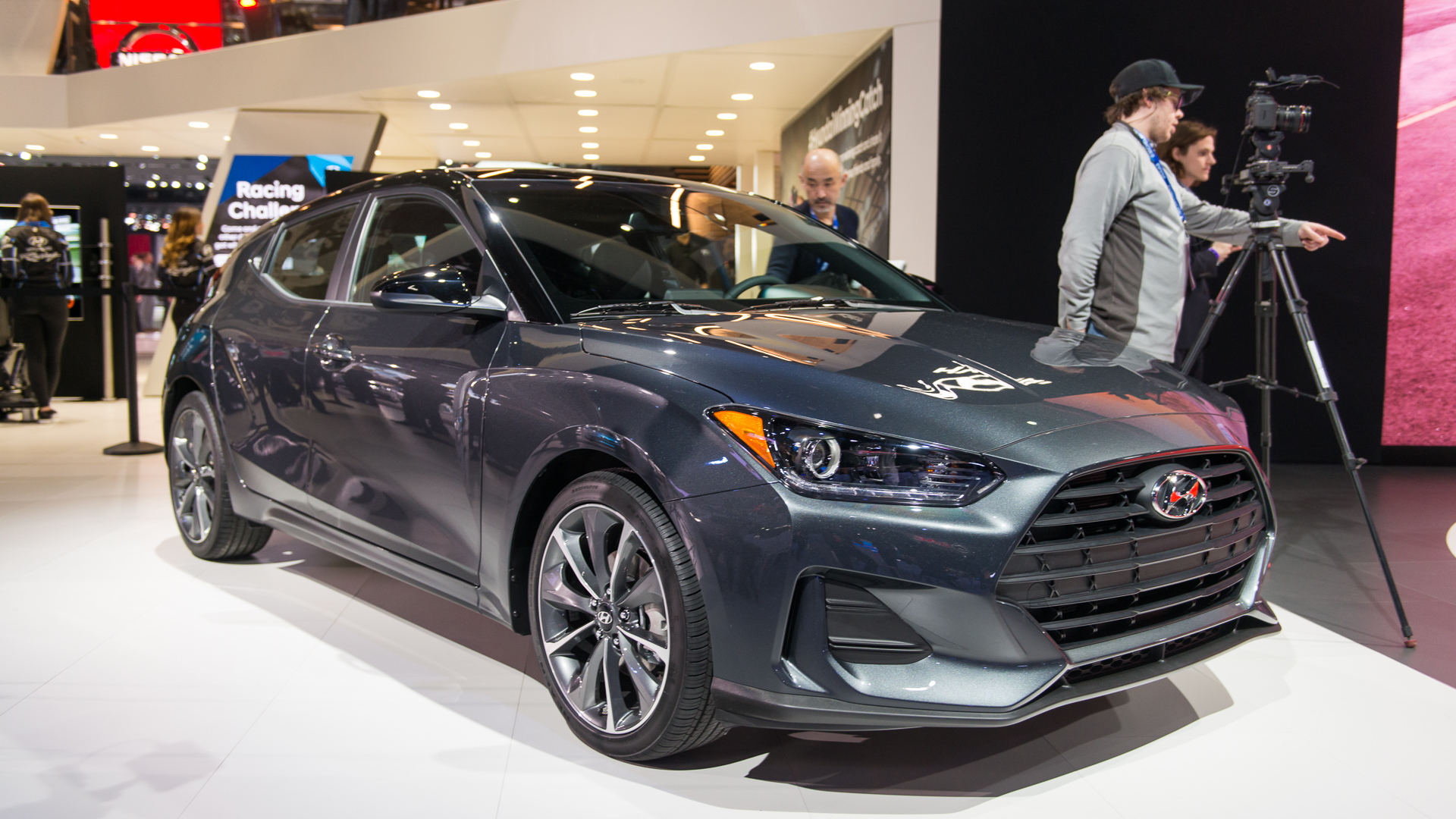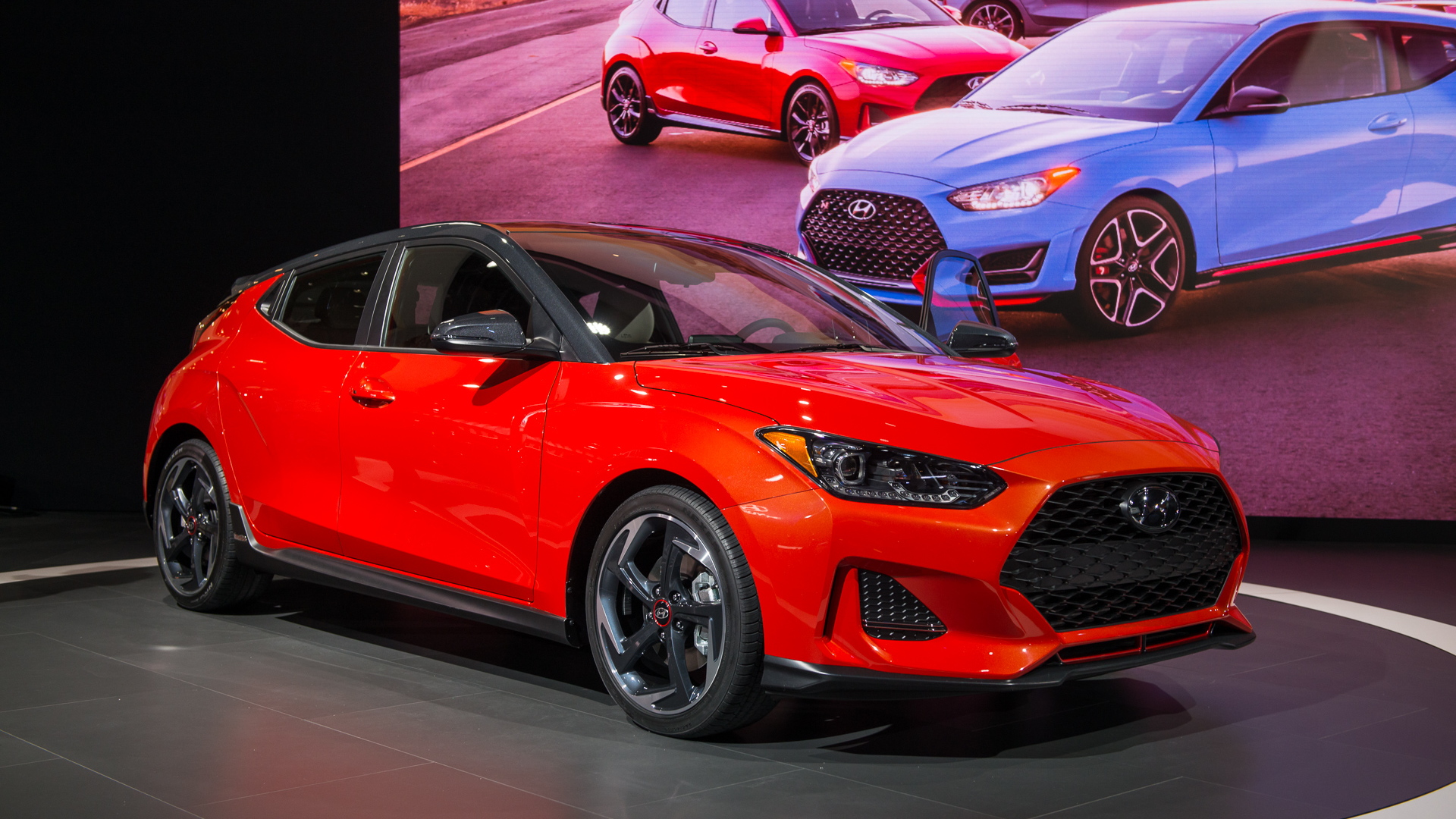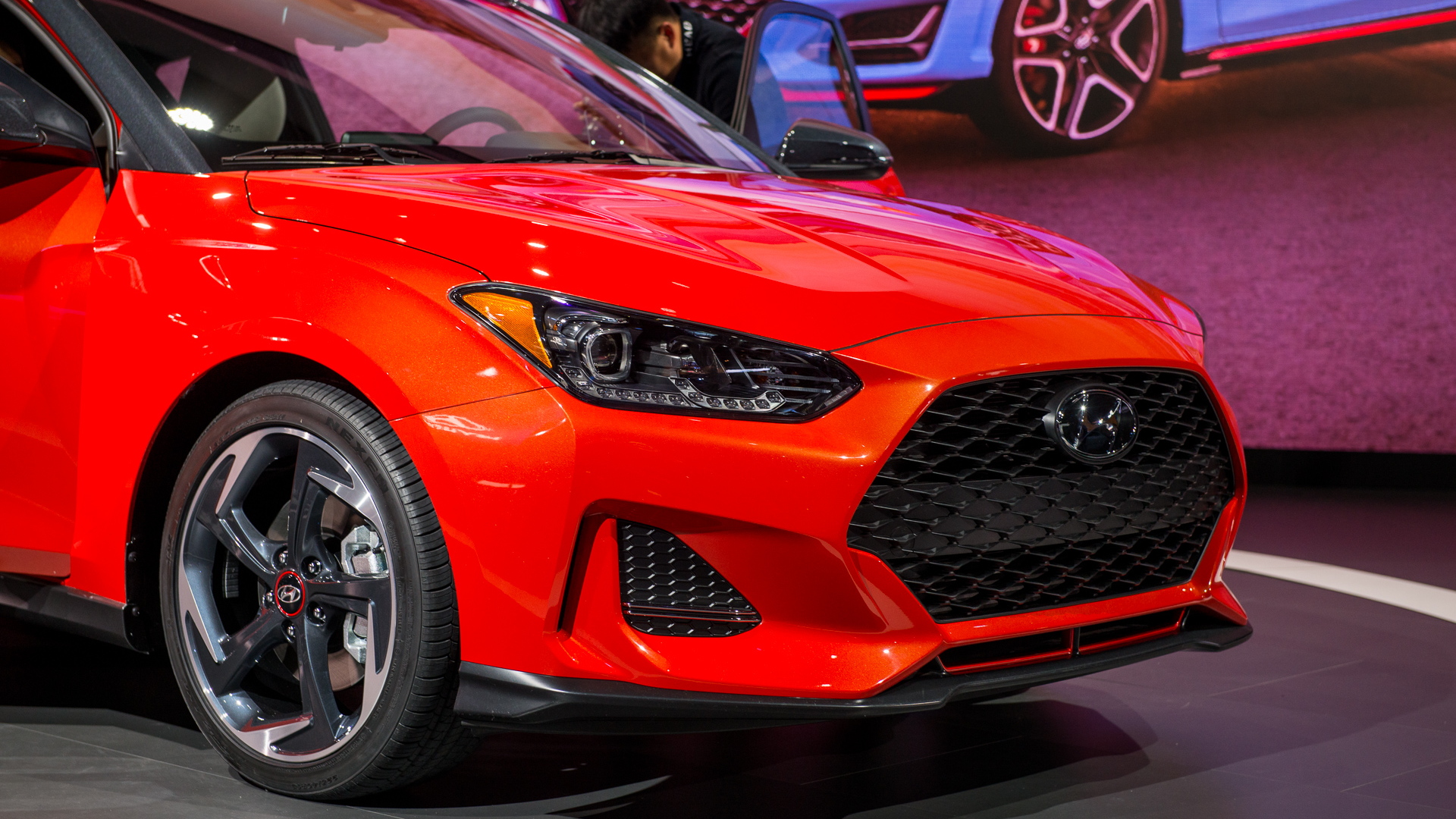The Hyundai Veloster seemed like a safe bet in the automotive death pool. Here was an odd, not very useful hatchback that wasn’t very good to drive from a brand that desperately needed crossovers and SUVs. Killing it seemed like a no-brainer.
Instead, it has been redesigned. The 2019 Hyundai Veloster that bowed at the 2018 Detroit auto show on Monday looks like more of the same, but the differences are in the details.
The similarities stars with the two powertrains—the base Veloster continues to use a 2.0-liter, naturally aspirated 4-cylinder while the Veloster Turbo gets a 1.6-liter, turbo-4. The output from the turbo carries over from last year with 201 horsepower and 195 pound-feet of torque. The base engine, though, gets a welcomed boost to 147 hp (+15) and 132 lb-ft (+12). Six-speed manual transmissions are standard with both engines, but the automatic options split off, with the 2.0-liter using a 6-speed torque-converted automatic and the Veloster Turbo working with a 7-speed dual-clutch unit.
DON'T MISS: 2019 Hyundai Veloster N spy shots and video
Hyundai took a similarly mild approach to the Veloster’s exterior. The front end gets Hyundai’s new familial grille and aggressive LED headlights, bringing the stylish Veloster’s face more in line with the brand’s other small cars. Designers pushed the A-pillars rearward to create a longer, sportier hood and integrated a set of air curtains in the front fascia.
The aggressive roofline—lower for 2019—and flared wheel arches still dominate the profile, while an odd third door sticks out on the passenger’s side like a vestigial limb. In back, squat, aggressive, Elantra-like taillights flank a tiny rear hatch that’s cleaner and more attractive thanks to Hyundai’s decision to hide the rear liftgate release beneath the wiper housing. The diffuser in the rear bumper is also more pronounced. The result of these changes is a vehicle that’s less than an inch larger in every important dimension.
MUST SEE: Hyundai N performance brand aims for America: will it be Veloster first?
While the design and powertrain changes are minor, Hyundai made bigger improvements to the Veloster’s feature set. A full suite of active safety systems is available—adaptive cruise control, forward collision warning with automatic emergency braking, blind-spot monitoring with rear cross-traffic alert, automatic high beams, and active lane control are all available. A head-up display crams even more information onto the windshield, from simple stuff like the speed and navigation directions to all manner of data about the active safety systems. A 7.0-inch infotainment system is standard, but an 8.0-inch is available—Apple CarPlay and Android Auto are standard on both setups. Owners can grab a Qi wireless charge pad, too.
Look for the 2019 Hyundai Veloster to arrive in show rooms during the second quarter of 2018.
For more coverage of the 2018 North American International Auto Show in Detroit, head over to our dedicated hub.





